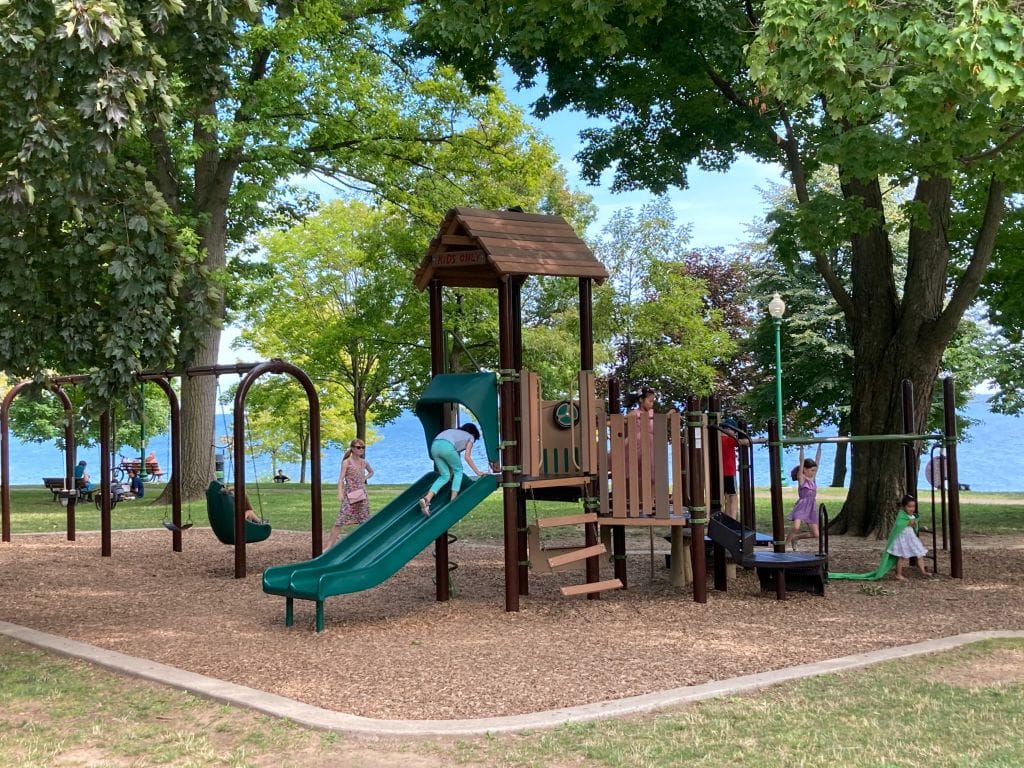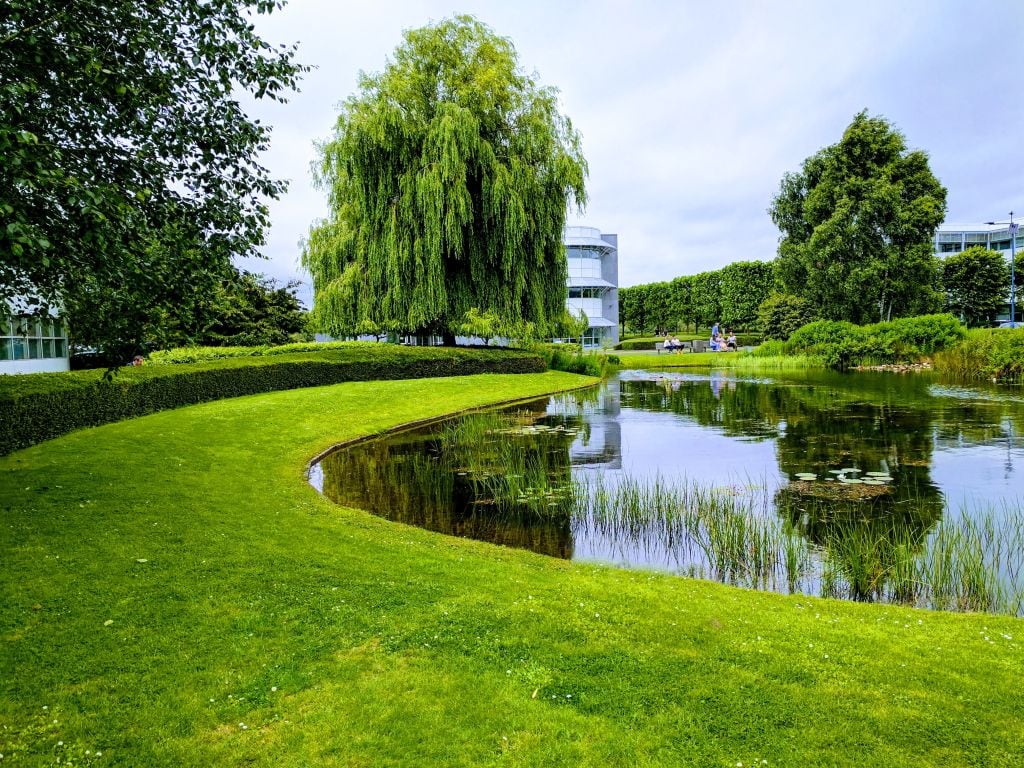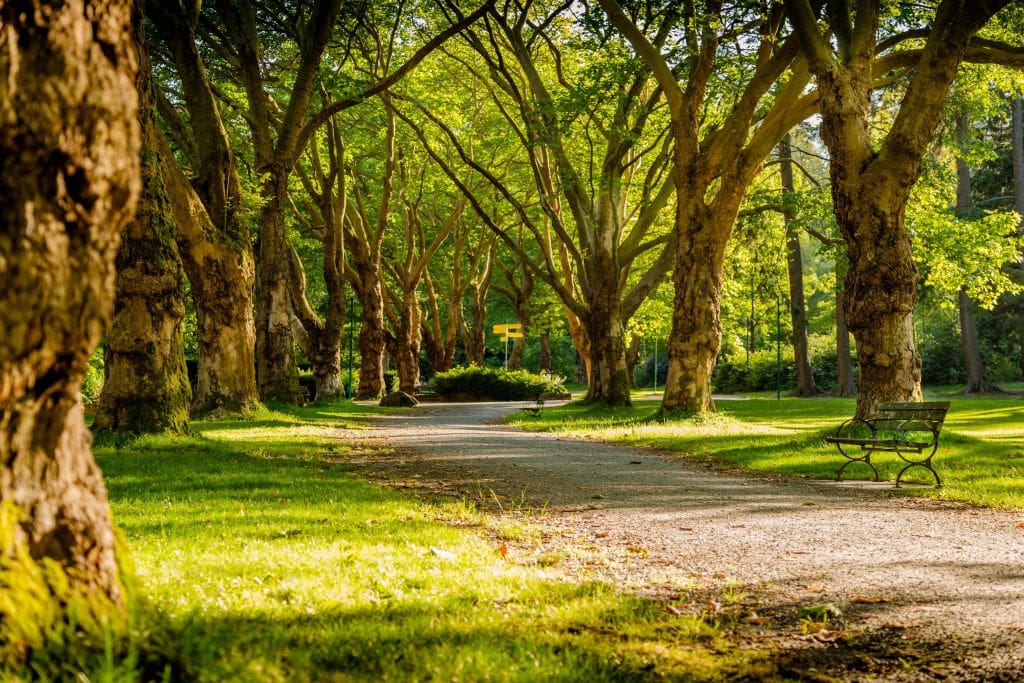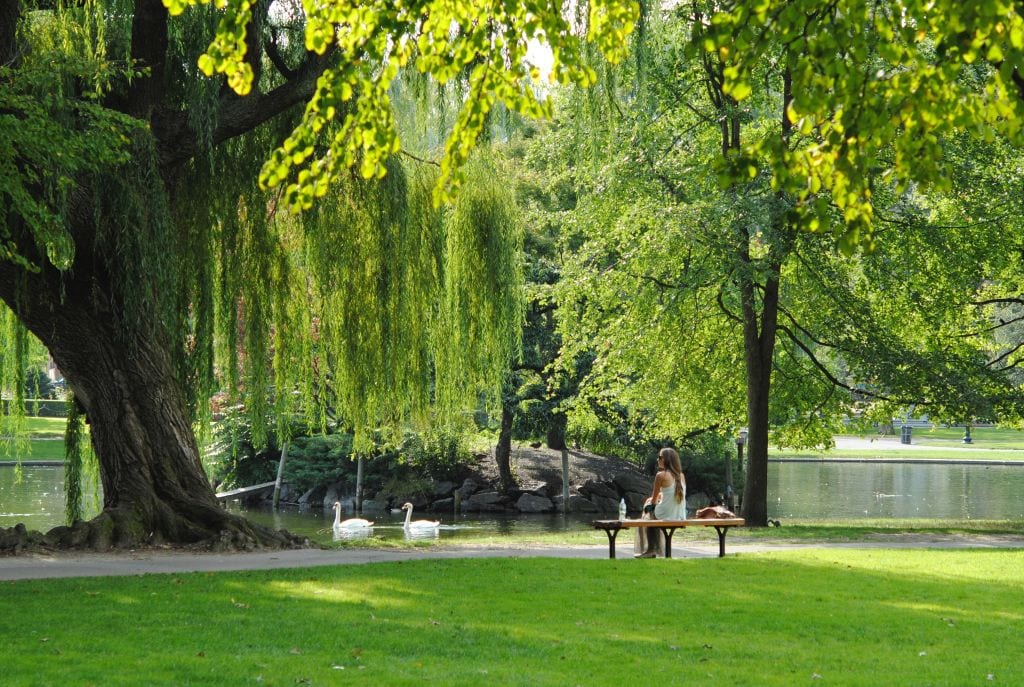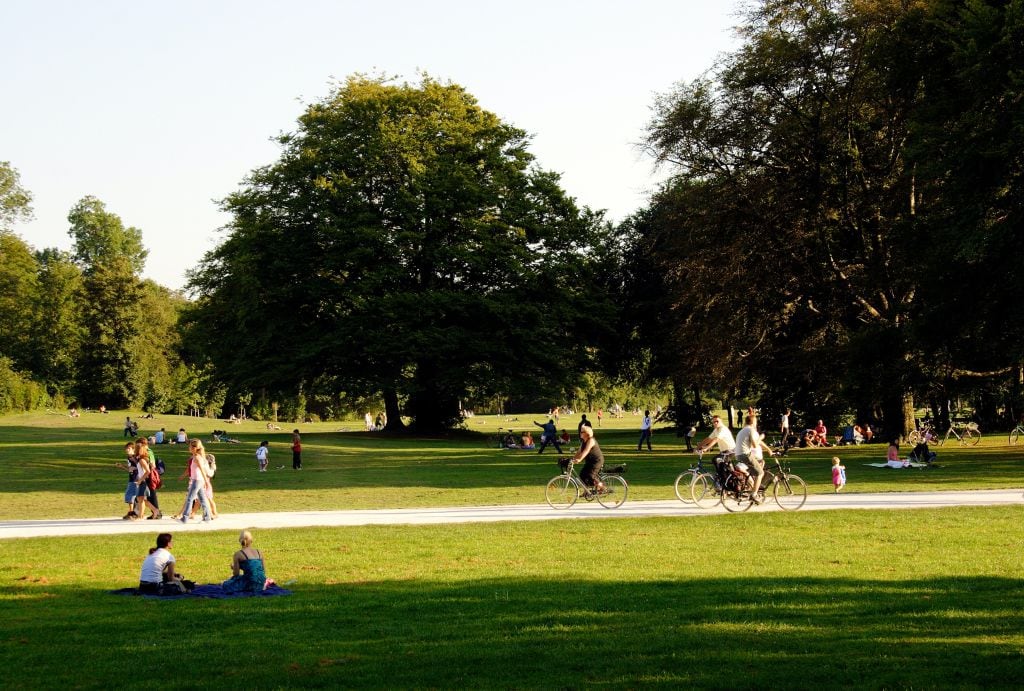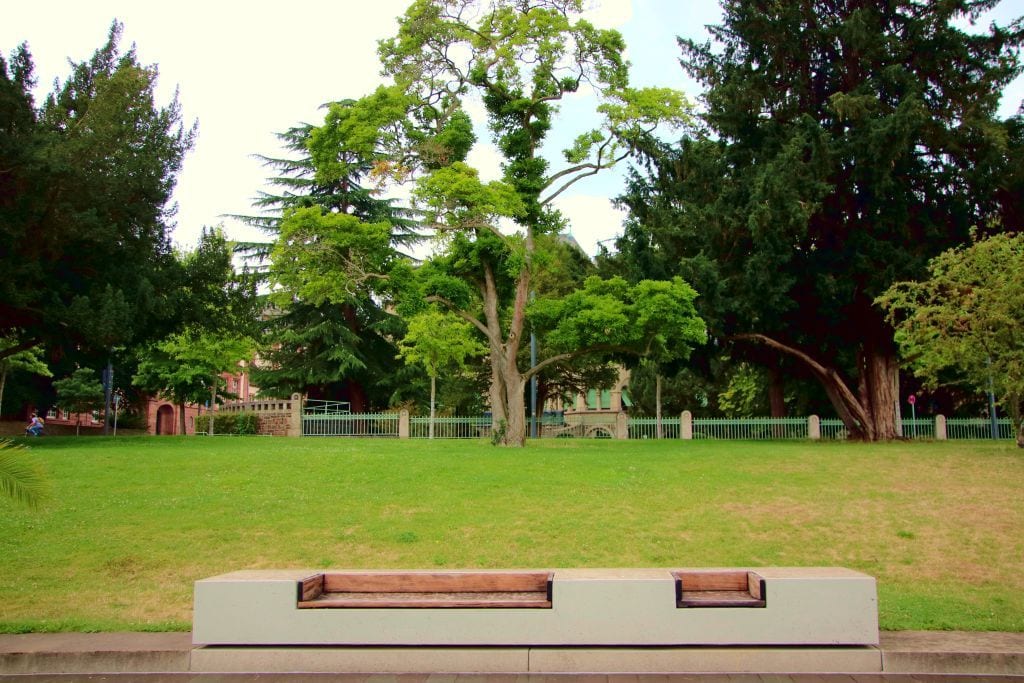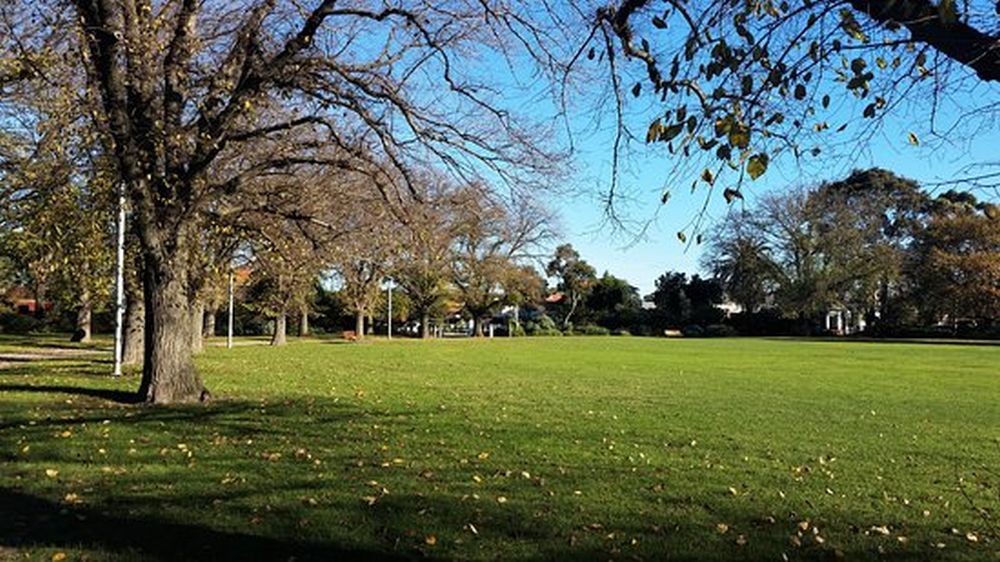In our research of Melbourne and Geelong, we found these attractions to be the best playgrounds and family outings. In the text above, you'll find additional details about each of the places we think you should see. Every one of these locations is special in its own way, and you should spend at least some time exploring and appreciating them.
Hays Paddock, Longstaff Street, Kew East
The first of its kind in Melbourne, this playground is accessible to people of all physical abilities. Superb for kids of all ages, abilities, and backgrounds. Extensive confined space with a wealth of exploration possibilities. For many years, this park has been heralded as one of Melbourne's finest recreational areas. Play Space instead of Adventure Playground because of its exquisite design.
It's an adventure, if you're looking for a little bit of an adrenaline rush. Even so, it has a lot of features that kids will love, including a number of slides and swings, a giant see-saw, a ring of toadstools to jump through, springers, a large rope climbing structure, a number of enormous hammocks to swing back and forth, and a sizable sandpit.
Most landing areas feature a springy, cushioned foundation, making the experience seem similar to Neil Armstrong's first steps on the moon. Safety gates surround the playground area. A bird hide outside overlooks the wetlands and the playground within. An instructional biking course is also available. Playground visitors may use the restrooms located just beyond the playground.
Brimbank Park
Along with its proximity to the Maribyrnong River, Brimbank Park in Keilor East also has a spacious playground.
In 1976, as a section of Maribyrnong Valley Park, Brimbank Park was opened to the public. The Maribyrnong River runs 55 metres below the western plains at the foot of a steep cliff. In this way, the park might be thought of as a huge amphitheatre, perfect for spectator sports like fishing, canoeing, bird viewing, kite flying, picnics, and contemplation.
Things to Do:
- Check out the local waterfowl, take a stroll around the lakeside paths, and relax in the café.
- Experience meeting some of the creatures that call Horseshoe Bend Farm home.
- Take a stroll along the Australian Plant Trail and take in the vibrant and beautiful flora that may be grown in the Keilor region.
- Use the spacious pathways to ride your bike. The primary path does a 4.3 kilometre loop around the river. Connecting to the Maribyrnong
- River Trail, it enables travellers to go by foot or bike from Keilor to Footscray along the river.
- The Maribyrnong River is perfect for canoeing.
- Students, get a nett and some waders so you may explore the wetlands and shallows and see what you can find.
- While the park is open, visitors may have a meal in the cafe located in the Brimbank Visitors Centre.
Facilities
The park has a parking lot, rest rooms, picnic tables, shelters, gas grills, trails for walking and biking, children's play areas, an information centre, and a café.
Changing tables for babies.
Heritage
Settlement of Brimbank Park by Europeans began in the 1830s, not long after Melbourne was established. The villagers would drive their livestock "around the brim of the bank" of the Maribyrnong River, thus the name. Until 1983, market gardens thrived on the east bank's fertile river flats. The river's erosion created terraces, which were later adapted for agricultural use.
Aboriginal habitation of the Maribyrnong terraces has been extensively researched. Keilor is among Australia's earliest inhabited locations. The Green Gully corpse was discovered in 1965, while the Keilor skull was discovered in 1940; both have been dated to around 15,000 years ago.
One of the most comprehensive records of Aboriginal settlement over a span of 30,000 years was discovered at the site, which saw excavations stop there in 1982.
Montrose Community Playground
Excellent All Abilities access; community playground constructed in 2008. This is the kind of playground where grownups and kids can have fun together, although Mom and Dad may have difficulties squeezing inside the little houses and shops.
A long ramp on one side leads to a magnificently painted wall depicting Australian bushland and an area with several climbing walls, while the centre space is occupied by two gigantic pyramid-shaped rope climbing frames. You'll find a large ladybug springer, four swings without chains, and a bird's nest swing off to the side.
On the opposite side of the playground, you'll find two swings equipped with safety chains, a swing with a harness, and another bird's nest swing. There is a fire station along with a number of other stores and a circular route with a variety of additional tools and facilities.
A spot with a few trees for shade and a few barbecues and picnic tables, some of which are covered. There is also a bathroom and a drinking fountain.
Silvan Reservoir Park (Silvan)
Silvan Reservoir Park is perfect for spending the day because of its scenic landscaping and large grassy spaces perfect for picnicking.
Things to Do
- The Overflow Parking Area is the starting point for a number of woodland walking paths.
- You can see the reservoir and the tower that controls the water flow if you go to the overlook.
- Make time for a picnic or BBQ as a family.
Heritage
Melbourne's need for more water sources dates back to 1914, when the city experienced a severe drought. By 1917, a location across Stonyford Creek from the town of Silvan was found to be ideal for a storage reservoir. Because Silvan Reservoir has such a tiny water catchment, it would have to depend nearly exclusively on water from neighbouring reservoirs, particularly the O'Shannassy.
The stilling basins and discharge canal were built starting in 1926. The bulk of the building was was up in 1927. The catchment area was logged over and all usable wood was removed. Typically, this included messmate and grey gum, which were used in the building of barracks and workplaces. To guarantee the highest possible water quality, all vegetation was removed to a height of around 10 metres above the flood level.
The dam wall was first built in 1928. When finished, it would span 644 metres at its peak, have a base width of 219 metres, and stand 43 metres tall.
In June of 1931, water storage at Silvan Reservoir got under way. In December of that year, 75 percent of Silvan's capacity had been reached. On July 7, 1931, the dam opened to the public for the first time.
Starting in 1953, Silvan has been supplied with water from the Upper Yarra Dam. Because to its age, the dam wall was stabilised in 1983. New grilling spaces, gardens, rotundas, and the Stonyford Creek Walking Track were also added to the existing picnic park at this time.
The National Trust of Australia has acknowledged the park for its exceptional formal landscape. The park's cultural and historical significance derives in large part from the Torulosa Stairway and the orderly arrangement of exotic plants and stones.
Looking After the Park
- Carry out your trash.
- The park has a strict no camping policy.
- Use only the fireplaces supplied for fires. On Total Fire Ban days, no open flames, including grills, may be lighted.
- On days of Total Fire Ban, Silvan Reservoir is now closed to the public.
- While leashed dogs are welcome in the major picnic areas, they are not allowed on the walking trails into the forest.
McKenzie Reserve, Bell Street, Yarra Glen
Within the play area, there is a shelter with both covered and open seating. A shelter complete with tables, a barbeque, a water tap, restrooms, a grassy area, and additional tables can be found just beyond the playground.
Wattle Park (Burwood)
Things to Do
- Use your free time to hit the links or the tennis courts. You may rent anything from golf equipment to caddies.
- Take use of the sports oval by flying a kite, jogging, walking, or playing cricket.
- Look for ducks and frogs in the natural rushes that line the ponds along the stream to the east.
- Visit the Wattle Park Nature and History Trail at your own pace.
Facilities
- There are parking lots, restrooms, picnic tables, gas grills, water, and gas, Outdoor play area with a playground, walkways, and a Golf Pro
- Shop kiosk/outlet.
- Tennis courts made of grass and asphalt.
- a public, nine-hole golf course.
- Places to change infants.
Heritage
Originally owned by Mrs. Eliza Welch, the rural area was acquired by the Hawthorn Tramways Trust in 1915 for the sum of 9,000 pounds, with the stipulation that it be utilised as a public park. The Chalet was built in 1928, the curator's house in 1932, and the majority of the athletic facilities during the following years, although serious planning and development did not begin until the late 1920s and early 1930s.
Around 12,000 wattles, indigenous, and ornamental trees were planted in Victoria, Australia, between 1926 and 1928, with help from the Field Naturalists Club of Victoria and the Wattle League.
Ruffey Lake Park, Victoria Street, Doncaster East
We took our kids to this amazing adventure playground, and they enjoyed the curved tunnel slide so much that their father created enough static energy to light Melbourne for a week just by sliding down it.
There are also a number of swings, a giant sandpit, a musical bridge, and a number of smaller slides, in addition to a set of stairs and ladders leading up to a lookout tower and a very long aluminium slide down a hill from a hut (similar to that which winter downhill skiers fly out of). The majority of the apparatus is hidden from view.
On top of the hill, you'll find a thrilling climbing structure, a gecko large enough to put Melbourne's fly population in a state of panic, and two flying foxes.
The area is dotted with grills and picnic tables. Don't arrive hungry since the scent of grilling food from nearby barbecues will make you insane. There are bathrooms, a drinking fountain, and a rather flat area suitable for ball activities. On the weekends, the playground often reaches capacity, making it difficult to get a parking spot.
Woodlands Historic Park (Greenvale)
Those who visit Woodlands Historic Park will get an interesting look into what settlers saw in the area back in the 1840s. In addition to the rich history contained in the Woodlands Homestead, many other physical connections survive as well. Public parkland was first designated here in 1980, and since then it has grown to include more than 700 hectares.
It's rich in historical and natural treasures that have survived the city's rapid development around Melbourne.
Things to Do
- Travel back in time by visiting Woodlands Homestead, a 'kit house' built in the 1840s. Listen to the hosts' fascinating tales about the building's numerous previous owners.
- The picnic spot on Somerton Road is a great place to have a meal in the shade of the beautiful River Red Gum trees.
- Take a stroll along Moonee Ponds Creek, which spans 1.5 kilometres.
- The 'Back Paddock' is an enclosed area where you may watch kangaroos, birds, and other animals.
- Climb Gellibrand Hill by Foot (204 m). Discover breathtaking vistas as you wander among the granite boulders.
- Discover more about our many walking tours, including guided tours, highlight tours, and more.
- Join the Friends of Woodlands Historic Park Inc. to lend a hand to the park rangers with any number of tasks.
- Move quickly down the railway by running, riding a bike, or riding a horse.
- Experience kangaroos in their native habitat.
Facilities
- On Wednesdays, weekends, and public holidays, you may visit Woodlands Homestead between the hours of noon and four o'clock.
- The Somerton Road picnic areas provide tables, running water, restrooms, and electric grills.
- Trails for walking, cycling, and riding a bike.
- Places to change infants.
Looking After the Park
- The wildlife preserve is a no-dogs zone, so make sure your pooch stays on a leash at all times.
- No campfires or open flames are allowed. It's OK to bring your own gas grill.
- Nothing foreign may enter, therefore all natural flora and animals are safe.
- It's against the rules to scavenge for firewood.
How to Get There
The park is located just to the north of Melbourne Airport, which is about a twenty-minute drive from the city centre. Both Woodlands Homestead and Providence Park may be accessed from Somerton Road, while Oaklands Road is the entry point for Woodlands Park.
Conclusion
This playground, the first of its kind in Melbourne, caters to children of all abilities. Exploration possibilities are endless in this vastly constrained area. Brimbank Park's main path circles the Maribyrnong River in a 4.3-kilometer loop. This area has been extensively studied for evidence of Aboriginal habitation. Located in the state of Victoria, Keilor is one of the country's oldest settlements.
Silvan Reservoir Park's large grassy areas make it ideal for picnicking. In 1931, the public was allowed access to the Silvan Reservoir for the first time. The National Trust of Australia has praised the park's formal landscape. The Torulosa Stairway and the orderly arrangement of exotic plants and stones contribute to the park's cultural and historical significance. One of the most well-known parks in Melbourne is Ruffey Lake Park, located on Victoria Street in Doncaster East.
Playground, giant sandpit, musical bridge, and very long aluminium slide down hill from hut are just some of the attractions here, in addition to the nine-hole golf course. Woodlands in Melbourne are home to a wealth of natural and historical treasures that have remained untouched by rapid urbanisation. Take a walk along the 1.5-kilometer Moonee Ponds Creek Trail or hike up Gellibrand Hill (204 metres).
Content Summary
- Longstaff Street, Kew East, Hays Paddock This playground, the first of its kind in Melbourne, caters to children of all abilities.
- Brimbank Recreation Area
- Brimbank Park in Keilor East has a large playground as well as being close to the Maribyrnong River for those who live in the area.
- Heritage
- Brimbank Park was first settled by Europeans in the 1830s, just a few years after Melbourne was founded.
- Located in the state of Victoria, Keilor is one of the country's oldest settlements.
- The Park at Silvan Reservoir (Silvan)
- A picnic in Silvan Reservoir Park's large grassy areas is a wonderful way to spend an afternoon.
- The city of Melbourne has been in desperate need of additional water sources since the devastating drought of 1914.
- An ideal location for a reservoir was discovered in 1917, across Stonyford Creek from the town of Silvan.
- Silvan Reservoir began storing water in June of 1931 and was completed in June of that year.
- In 1953, the Upper Yarra Dam began providing water to the town of Silvan.
- Take your time exploring the Wattle Park Nature and History Trail.
- Heritage
- The Hawthorn Tramways Trust bought the rural area from Mrs. Eliza Welch in 1915 for £9,000 with the condition that it be used as a public park.
- Visitors to Woodlands Historic Park will learn a lot about what life was like in the area in the 1840s.
- More than 700 hectares of public parkland have been designated since it was first designated in 1980.
- Visit Woodlands Homestead, a 'kit house' built in the 1840s, to relive a bygone era.
FAQs About Melbourne
- Melbourne's famous tramway system is the largest outside Europe and the fourth largest in the world.
- The world's first feature film, the Story of the Ned Kelly Gang was filmed and made in Melbourne in 1906.
- Melbourne had the first gay and lesbian radio station in the world.
Melbourne is known for being one of the most liveable cities on earth. Often referred to as 'the Sporting Capital of the World', besides this it is also famous for its graffitied laneways, excellent coffee, cultural diversity and bayside location. This eclectic Australian city has something for everyone.
Melbourne is famous for its culture, and the National Gallery of Victoria is the jewel in the crown. It's not only the oldest public art gallery in Australia, it's also the most visited. Here, you can admire more than 70,000 works of European, Asian, Oceanic, and American art in two city locations.

